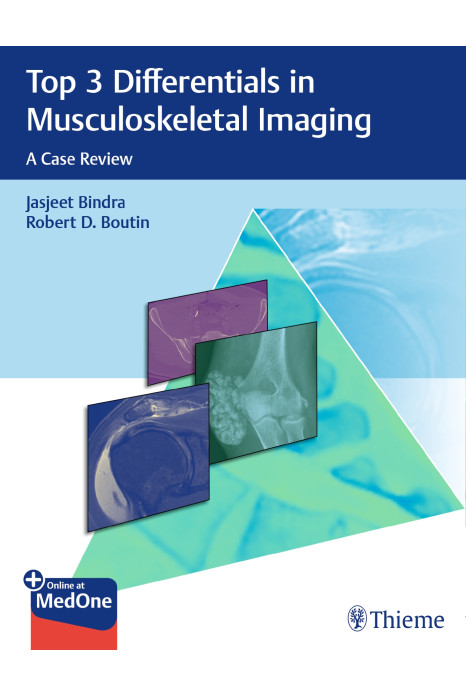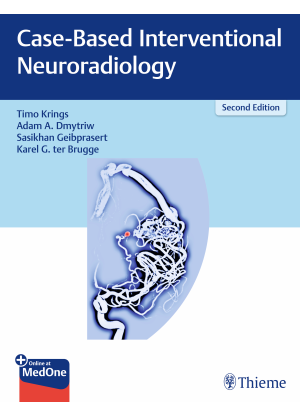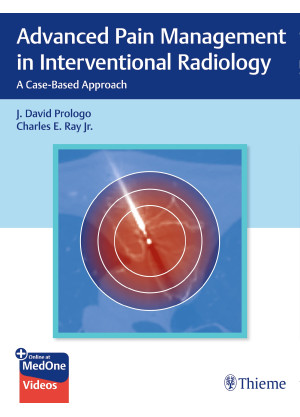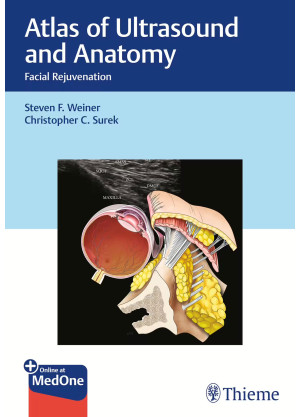The highest-yield musculoskeletal radiology exam prep and learning tool available today!
Top 3 Differentials in Musculoskeletal Imaging: A Case Review by Jasjeet Bindra, Robert D. Boutin, and expert contributors is one in a series of radiology case books mirroring the format of the highly acclaimed O'Brien classic, Top 3 Differentials in Radiology: A Case Review. The book is organized in 10 parts: trauma, bone tumors, upper extremity, lower extremity, arthropathies, infection, soft tissue tumors, metabolic musculoskeletal conditions, spine, and pediatric/developmental musculoskeletal conditions.
Each case is formatted as a two-page unit. The left page features clinical images, succinctly captioned findings, and pertinent clinical history. The right page includes the key imaging gamut, differential diagnoses, additional diagnostic considerations, the diagnosis, clinical pearls, and suggested readings.
Key Features
- A total of 146 cases, each focused on a specific imaging finding, including aggressive periosteal reaction, focal cortical thickening, diffusely increased bone density, focal periphyseal edema, acro-osteolysis, and more
- A wealth of meticulously selected, high-quality radiographs, CTs, and MRIs enhance diagnostic skills
- A list of differential diagnoses provides an ideal curriculum guide for trainees and educators alike
Radiology residents, fellows, and staff radiologists preparing for certification will greatly benefit from reading this text to prep for the radiology core and certifying exams. This is also an outstanding, day-to-day practice resource for practicing radiologists, clinicians, and orthopaedic surgeons involved in reviewing and interpreting musculoskeletal radiology studies.
This book includes complimentary access to a digital copy on https://medone.thieme.com.
Part 1: Trauma
1 Shoulder dislocation
2 Distal clavicular erosion
3 Widening of acromioclavicular (AC) joint
4 Fracture dislocation of forearm
5 Carpal dislocation
6 Avulsion fracture of finger
7 Avulsion fracture of the pelvis
8 Widened pubic symphysis
9 Pelvic ring disruption
10 Avulsion fracture at the knee
11 Distal fibular fracture
12 Calcaneal avulsion fracture
13 Fracture at the base of the fifth metatarsal
Part 2: Bone Tumors
14 Aggressive periosteal reaction
15 Focal cortical thickening
16 Epiphyseal equivalent lucent lesion
17 Solitary focal sclerotic lesion
18 Lesion with permeative or moth-eaten pattern
19 Osseous lesion with fluid–fluid levels
20 Osseous lesion with chondroid matrix
21 Osseous lesion with osteoid matrix
22 Polyostotic lesions–looks like a syndrome
23 Surface lesion of bone
24 Multiple lytic lesions
25 Multiple sclerotic lesions
26 Expansile lytic lesion of rib
27 Ivory vertebral body
28 Lytic lesion of distal phalanx
29 Anterior tibial cystic appearing lesion
30 Lucent lesion in calcaneus
31 Diffusely increased bone density
32 Well-marginated ossific mass projecting off the surface of the bone (without full-thickness cortical disruption or overlying soft-tissue mass)
33 Long lesion in a long bone with ground glass matrix–Roentgen classic
34 Bony projection with continuation of cortex and medullary cavity of host bone–Roentgen classic
35 Fractured lytic lesion with a fallen fragment–Roentgen classic
Part 3: Upper Extremity
36 Abnormal/variant appearance of anterosuperior labrum
37 Abnormality of inferior glenohumeral ligament
38 Abnormality of proximal long head of biceps tendon
39 Tear of the anteroinferior labrum
40 Bursa or cyst around the shoulder
41 Rotator cuff abnormality
42 Rotator interval abnormality
43 Posterior glenoid labral abnormality
44 Nerve entrapment at shoulder
45 Nerve entrapment at elbow
46 Distal biceps tendon abnormality
47 Radial-sided, soft-tissue injury at elbow on MRI
48 Osteochondral lesion of elbow
49 Ulnar-sided, stabilizer injury at elbow on MRI
50 Numerous tiny T2 hyperintense subcutaneous nodules
Part 4: Lower Extremity
51 Variant sciatic nerve anatomy
52 Ischiofemoral space narrowing and quadratus femoris muscle edema in a patient with chronic ischial tuberosity avulsion (nonunion)
53 Small smoothly marginated depression ("fossa") at the mid-acetabular roof
54 Focal subchondral bone edema in the femoral head
55 Low-grade tearing of the iliotibial band (ITB), with soft-tissue edema along the fascia
56 Focal periphyseal edema
57 Curvilinear signal separating the patella into two fragments
58 Frond-like lobules of fatty tissue in the suprapatellar recess, with effusion
59 Cystic-appearing lesion centered inferior to the medial joint line of the knee
60 Accessory muscle around ankle
61 Accessory ossicle around ankle
62 Achilles tendon abnormality
63 Impingement syndrome at ankle
64 Ankle sprain
65 Medial tendon abnormality at ankle
66 Nerve entrapment around ankle and foot
67 Plantar fascial abnormality
68 Peroneal tendon disease at the ankle
69 Midfoot ligamentous or osseous injury
70 Hallux sesamoid abnormality
71 Subchondral crescent sign–Roentgen classic
72 Fluid collection at the inferomedial aspect of hip–Roentgen classic
73 Cleft of T2 hyperintense signal at the attachment of rectus abdominis-adductor aponeurosis–Roentgen classic
74 Hamstring tendon discontinuity with subacute hematoma–Roentgen classic
Part 5: Arthropathies
75 Intense, diffuse, nontraumatic bone and soft-tissue edema centered at the midfoot
76 Polyarticular arthritis in an adolescent, with "blooming" intraarticular hemosiderin
77 Bilateral sacroiliitis
78 Contour defect at the posterolateral humeral head
79 Proximal arthropathy affecting primarily the metacarpophalangeal joints.
80 Distal arthropathy affecting primarily the interphalangeal joints
81 Erosive arthropathy involving the foot
82 Acro-osteolysis
83 Loose bodies
84 Articular cartilage thinning, subchondral cyst formation and dorsal subluxation of the metacarpal base–Roentgen classic
Part 6: Infection
85 Penumbra sign
86 Sequestrum
87 Fluid collection with edema at metaphyseal-equivalent location (prior to skeletal maturity)
88 Space occupying lesion posterior to olecranon
89 Unilateral sacroiliitis
90 Epitrochlear lymphadenopathy
91 Aggressive, cortically-based osteolysis and periosteal reaction at the diaphysis of an adult long bone
92 Abscesses in bone and adjacent to bone, with thin perforations in cortex–Roentgen classic
Part 7: Soft Tissue Tumors
93 Fusiform mass, with longitudinal "tail" entering and exiting eccentrically
94 Complex fluid collection in the bicipitoradial bursa
95 Infiltrative intra-articular mass of low-T2 signal intensity, with erosions
96 Non-mineralized soft-tissue mass with an infiltrative border ("tail sign") that responds favorably to non-operative treatment
97 Post-traumatic fluid-like collection in the deep subcutaneous tissue along the superficial aspect of the fascia
98 Large, pendulous mass at the inner thigh in a morbidly obese patient
99 Leg, ankle, and foot edema, with prominent thickening and increased density of the subcutaneous fat layer
100 Triad of key findings: Pretibial varices, linear cortical defect in mid tibia, and prominent nutrient vein within the mid tibia
101 Multiple T2-hypointense masses in the subcutaneous fat layer of the foot
102 Large subfascial soft-tissue mass with heterogeneous signal on T1, T2, and post-contrast images
103 Rim enhancing mass in iliopsoas
104 Infrascapular soft-tissue mass containing diffuse streaks of fatty tissue–Roentgen classic
Part 8: Metabolic Musculoskeletal Conditions
105 Frayed metaphyses
106 Generalized periosteal reaction
107 Periarticular calcified mass
108 Long bone sclerosis
109 Multiple bone infarcts
110 Osteoporosis
111 Widespread soft tissue calcifications
112 Rugger jersey spine
Part 9: Spine
113 Vertebral body fusion
114 Odontoid fracture
115 Hyperflexion Injury
116 Midline sacral lesion
117 Posterior vertebral body scalloping
118 Anterior vertebral body scalloping
119 Lytic lesion of posterior elements of spine
120 Epidural mass
121 Diffuse marrow T1 and T2 low signal
122 Focal T1 signal increase
123 Intradural extramedullary mass
124 Intradural intramedullary spinal cord mass
125 End plate irregularity
Part 10: Pediatric or Developmental Musculoskeletal Conditions
126 Short rib skeletal dysplasia
127 Abnormal epiphyses
128 Limb deficiency
129 Genu varum
130 Lucent metaphyses
131 Dense metaphyses
132 Dislocated hip
133 Physeal widening
134 Hip effusion
135 Infrapatellar soft tissue swelling
136 Foot deformity
137 Soft tissue mass in an infant
138 Large soft tissue mass in an older child
139 Periosteal reaction in a newborn/infant
140 Wormian bones
141 Madelung deformity
142 Tarsal coalition
143 Well-corticated ossific density at the lateral aspect of acromion–Roentgen classic
144 Osteoporosis, bowing deformities, and multilevel spine fractures–Roentgen classic
145 Decreased lower lumbar interpediculate distances, "tombstone" iliac bones, "champagne glass" pelvic inlet, and rhizomelic limb shortening–Roentgen classic
146 Multiple rib fractures in various stages of healing–Roentgen classic














